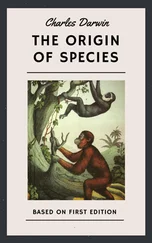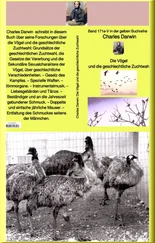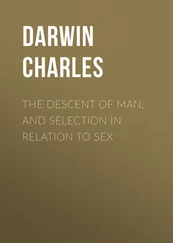George Bettany - Life of Charles Darwin
Здесь есть возможность читать онлайн «George Bettany - Life of Charles Darwin» — ознакомительный отрывок электронной книги совершенно бесплатно, а после прочтения отрывка купить полную версию. В некоторых случаях можно слушать аудио, скачать через торрент в формате fb2 и присутствует краткое содержание. Жанр: foreign_antique, foreign_prose, foreign_language, на английском языке. Описание произведения, (предисловие) а так же отзывы посетителей доступны на портале библиотеки ЛибКат.
- Название:Life of Charles Darwin
- Автор:
- Жанр:
- Год:неизвестен
- ISBN:нет данных
- Рейтинг книги:3 / 5. Голосов: 1
-
Избранное:Добавить в избранное
- Отзывы:
-
Ваша оценка:
- 60
- 1
- 2
- 3
- 4
- 5
Life of Charles Darwin: краткое содержание, описание и аннотация
Предлагаем к чтению аннотацию, описание, краткое содержание или предисловие (зависит от того, что написал сам автор книги «Life of Charles Darwin»). Если вы не нашли необходимую информацию о книге — напишите в комментариях, мы постараемся отыскать её.
Life of Charles Darwin — читать онлайн ознакомительный отрывок
Ниже представлен текст книги, разбитый по страницам. Система сохранения места последней прочитанной страницы, позволяет с удобством читать онлайн бесплатно книгу «Life of Charles Darwin», без необходимости каждый раз заново искать на чём Вы остановились. Поставьте закладку, и сможете в любой момент перейти на страницу, на которой закончили чтение.
Интервал:
Закладка:
At Maldonado within the distance of a morning’s walk no fewer than eighty species of birds were collected, most of them exceedingly beautiful. Darwin’s observations on the molothri (representatives of our cuckoos), the tyrant fly-catchers, and the carrion-feeding hawks are most attractive reading. Rio Negro, much further south, was next visited, and the fauna of a salt lake examined. The adaptation of creatures to live in and near brine struck him as wonderful. “Well may we affirm,” says he, “that every part of the world is habitable! Whether lakes of brine, or those subterranean ones, hidden beneath volcanic mountains – warm mineral springs – the wide expanse and depths of the ocean – the upper regions of the atmosphere, and even the surface of perpetual snow – all support organic beings.” Here he found reason to believe that all the great plains which he was surveying had been raised above the sea level in a modern geological period.
Our naturalist started by land for Bahia Blanca and Buenos Ayres on August 11, 1833, and we have the record: “This was the first night which I had ever passed under the open sky, with the gear of the recado for my bed. There is high enjoyment in the independence of the Gaucho’s life, to be able at any moment to pull up your horse, and say, ‘Here we will pass the night.’ The deathlike stillness of the plain, the dogs keeping watch, the gipsy group of Gauchos making their beds round the fire, have left in my mind a strongly-marked picture of this first night, which will not soon be forgotten.” After an interesting rencontre with General Rosas, Bahia Blanca was reached, and at Punta Alta were found many of the fossil bones which Owen subsequently described, this point being a perfect catacomb, as Darwin terms it, for monsters of extinct races. The remains of nine great kinds of quadrupeds chiefly allied to the sloths were found embedded on the beach within a space of about two hundred yards square; and these were associated with shells of molluscs of still existing species. Here was indeed a remarkable fact to germinate in the great naturalist’s mind. It bore full fruit at a later date. An important theory then current, that large animals require a luxuriant vegetation, was overthrown at the same time, for there was every reason to believe that the sterility of the surrounding country was no new thing. The South American ostrich and many other animals here afforded material for important observations.
On the way to Buenos Ayres, the rugged Sierra de la Ventana, a white quartz mountain, was ascended. Buenos Ayres was reached on September 20, 1833, and no time was lost in arranging for an expedition to Santa Fé, nearly 300 miles up the Parana. On October 3, Santa Fé was entered, and near it many more remains of large extinct mammals were found. The remains of a horse, in a similar fossil condition, greatly astonished our explorer, for it seemed indeed surprising that in South America a native horse should have co-existed with giant extinct forms, and should itself have become extinct, to be succeeded in modern times by the countless herds descended from the few horses introduced by the Spanish colonists. These and other strange facts in the distribution of mammalian animals in America led Darwin to make some pregnant comments. The enormous number of large bones embedded in the estuary deposits became continually more evident, until he came to the conclusion that the whole area of the Pampas was one wide sepulchre.
Unfortunately ill-health compelled the explorer to return, and on October 12th he started for Buenos Ayres in a small vessel. During this journey he had an opportunity of examining the shifting and variable islands of the muddy Parana, on which the jaguar thrives. Arrived at Las Conchas, a revolution had broken out, and Darwin was detained to a certain extent under surveillance; but by the influence of General Rosas’ name, he was allowed to pass the sentinels, leaving his guide and horses behind, and ultimately reached Buenos Ayres in safety. After a fortnight’s delay, Monte Video was once more made for. Here it appeared that the Beagle would remain sometime longer, so the restless inquirer started on another expedition, this time up the Uruguay and Rio Negro. One of the halts was at the house of a very large landed proprietor. A friend of the proprietor’s, a runaway captain from Buenos Ayres, was very anxious to have the traveller’s opinion on the beauty of the Buenos Ayres ladies, and on receiving satisfactory assurances, voluntarily gave up his bed to the stranger! During this journey amazing quantities of huge thistles were met with, the cardoon being as high as a horse’s back, while the Pampas thistle rose above the rider’s head. To leave the road for a yard was out of the question. Incidentally the writer describes fully the horsemanship of the Gauchos, and gives a vivid picture of the state of society in the towns.
During this journey, too, a peculiar breed of small cattle, called niata, was observed, but full details were not given till the second edition of the Journal appeared. This breed is strangely at a disadvantage in droughts, compared with ordinary cattle; their lower jaws project beyond the upper, and their lips do not join, rendering them unable to browse on twigs. “This strikes me,” says Darwin, “as a good illustration of how little we are able to judge from the ordinary habits of life, on what circumstances, occurring only at long intervals, the rarity or extinction of a species may be determined.” By the time this appeared, however, in 1845, the author had embarked on his great investigation.
The Rio Plata was quitted on December 6, 1833, and sail was made for Port Desire, on the coast of Patagonia. One evening, ten miles from the Bay of San Blas, myriads of butterflies filled the air, so that the seamen cried out that it was snowing butterflies. The flight seemed to be voluntary. On another occasion many beetles were found alive and swimming, seventeen miles from the nearest land. But these instances were insignificant compared with the alighting of a large grasshopper on the Beagle , when to windward of the Cape de Verde Islands, and when the nearest land, in a direction not opposed to the prevailing trade wind, was 370 miles distant. Marvellous appearances of spiders far from land were also noted. One day when the ship was sixty miles from land vast numbers of a small gossamer spider arrived. Its habits in fact were aëronautic; it would send forth a small thread, and suddenly letting go its hold, would sail away horizontally.
The Beagle arrived at Port Desire on December 23, 1833, but Patagonia afforded less of interest to the zoologist than the northern countries. The next halt was made at Port St. Julian, 110 miles further south, on January 9, 1834. Here the evidences of the modern elevation of Patagonia were powerfully reinforced, and further, from the nature of the animal remains arose the conviction that “existing animals have a close relation in form with extinct species,” another of the germinal facts which bore fruit in the “Origin of Species.” Darwin was led to speculate on the causes which could have extinguished so many great species, and he remarks most suggestively: “One is tempted to believe in such simple relations as variation of climate and food, or introduction of enemies, or the increased numbers of other species, as the cause of the succession of races.” But he does not yet go farther. He ends his reflections by observing: “All that at present can be said with certainty is that, as with the individual, so with the species, the hour of life has run its course, and is spent.”
In the second edition of the Journal the philosopher showed signs of considerable advance (pp. 174-5). The effect of changed conditions is further developed. The checks to indefinite multiplication are insisted on, while the tendency of every species to increase geometrically is clearly pointed out. In the place of the former concluding sentence we find the following: “To admit that species generally become rare before they become extinct – to feel no surprise at the comparative rarity of one species with another, and yet to call in some extraordinary agent and to marvel greatly when a species ceases to exist, appears to me much the same as to admit that sickness in the individual is the prelude to death – to feel no surprise at sickness – but when the sick man dies, to wonder, and to believe that he died through violence.”
Читать дальшеИнтервал:
Закладка:
Похожие книги на «Life of Charles Darwin»
Представляем Вашему вниманию похожие книги на «Life of Charles Darwin» списком для выбора. Мы отобрали схожую по названию и смыслу литературу в надежде предоставить читателям больше вариантов отыскать новые, интересные, ещё непрочитанные произведения.
Обсуждение, отзывы о книге «Life of Charles Darwin» и просто собственные мнения читателей. Оставьте ваши комментарии, напишите, что Вы думаете о произведении, его смысле или главных героях. Укажите что конкретно понравилось, а что нет, и почему Вы так считаете.












